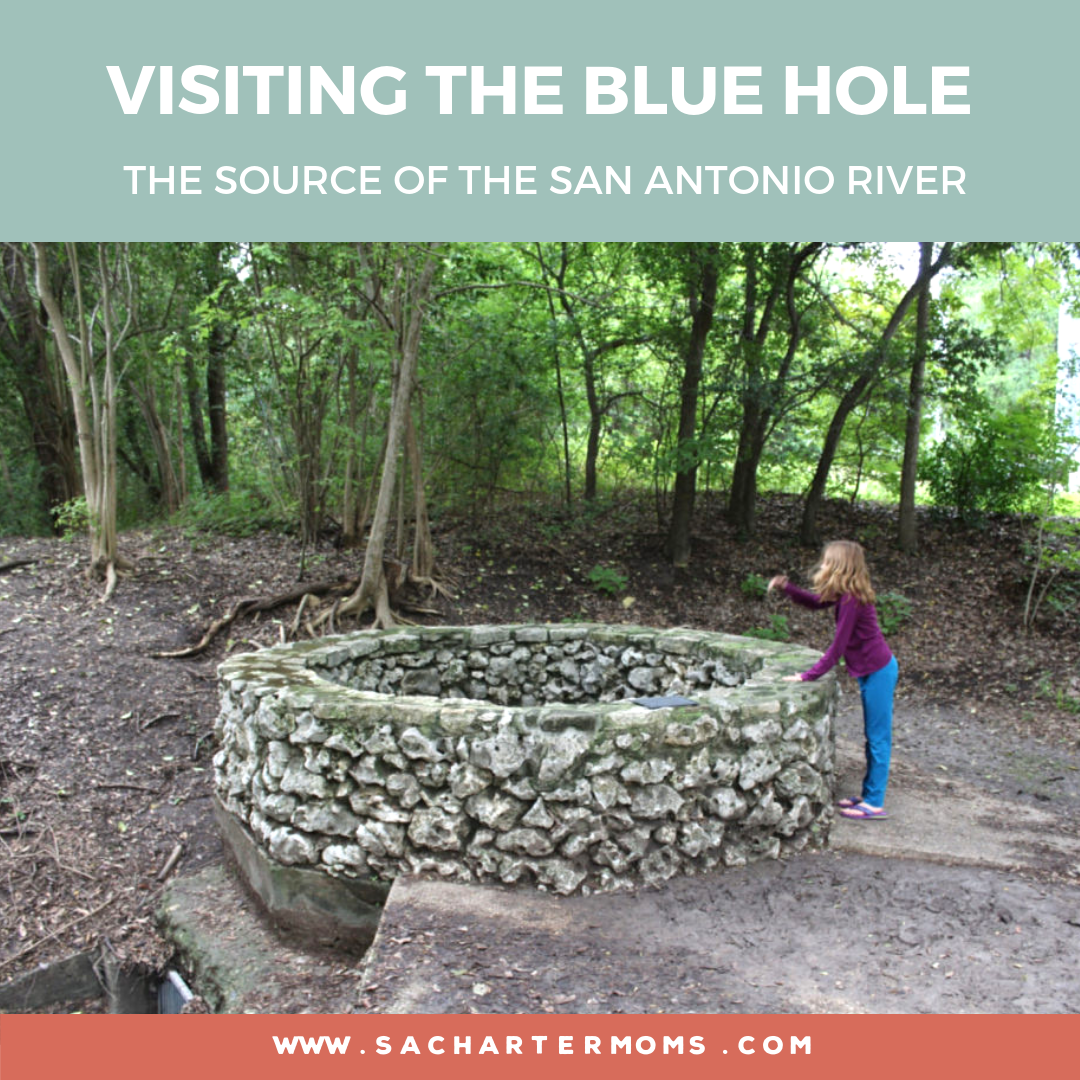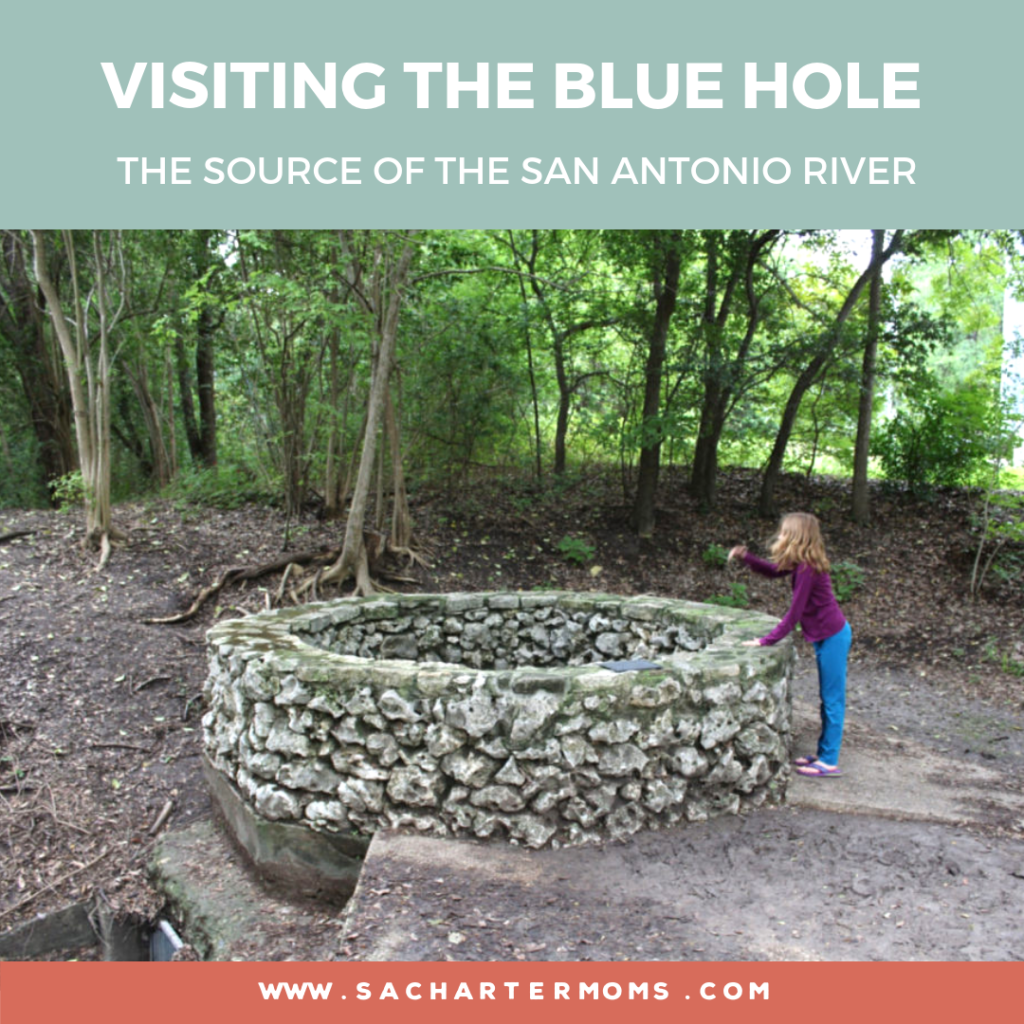
The Blue Hole is a modest place, but it’s still a must-see for people who love San Antonio. Along with other springs in the Headwaters area, the Blue Hole is traditionally considered the source of the San Antonio River, so it’s an important place for appreciating how water has shaped our city and its culture for ages. Visiting the Blue Hole is a brief, free, family-friendly excursion, and may spark curiosity about where San Antonio gets its water from and how we can conserve it for future generations.
What Is the Blue Hole?
The Blue Hole, also known as the San Antonio Spring, Ojo de Agua, or Yanaguana, is located in the Headwaters at the Incarnate Word preserve on the campus of the University of the Incarnate Word in San Antonio and Alamo Heights. When the water level in the Edwards Aquifer is high enough—at least 672 feet above sea level as measured at the J-17 well—clear water surges up from cracks in the limestone and spills into a riverbed that eventually becomes the San Antonio River Walk that we know and love. For a detailed account of the science and history of the Blue Hole, see “San Antonio Springs and Brackenridge Park” by Gregg Ekhardt at the Edwards Aquifer Website.
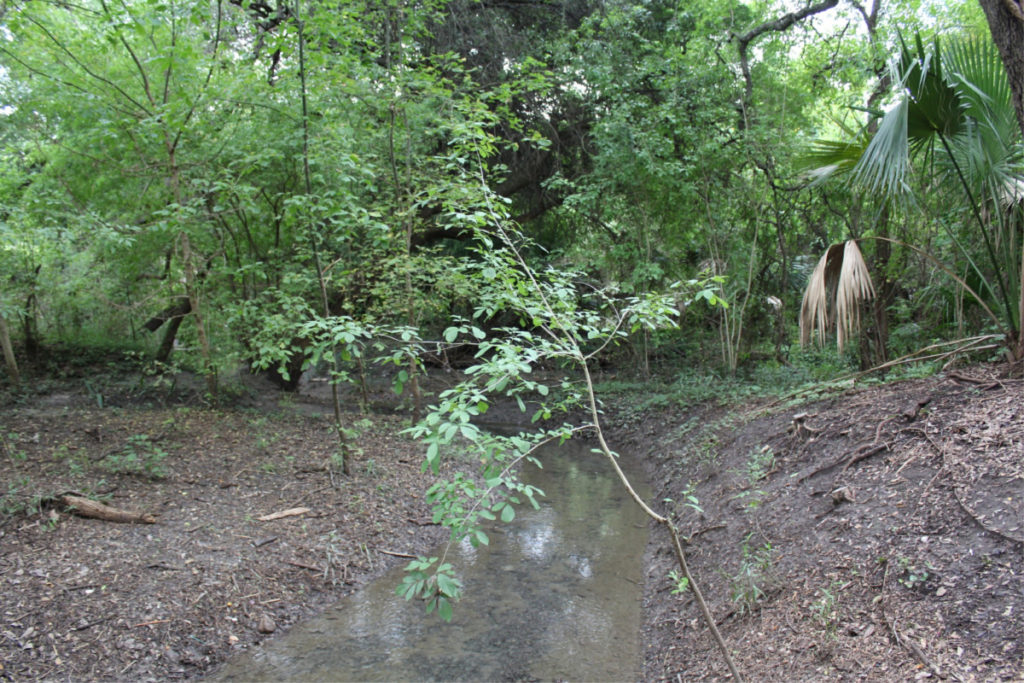
The history of human settlement around the Blue Hole dates back approximately 12,000 years. From 1869 to 1897, the area around the Blue Hole was the estate of George W. Brackenridge, familiar to readers of this blog as the settlor of the education-focused George W. Brackenridge Foundation, until he sold the land, his house (now know as the Brackenridge Villa), and its contents to the Sisters of Charity of the Incarnate Word.
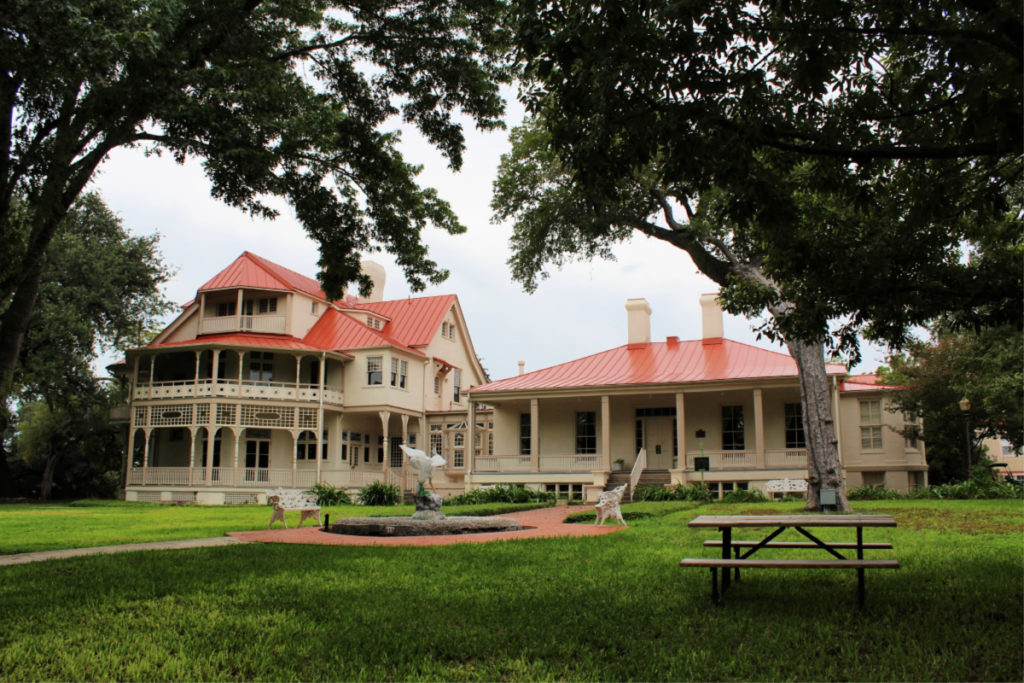
Just to be clear—there is another Blue Hole in the region, a popular swimming hole near Wimberley. There’s also an East Texas Blue Hole.
How to Visit the Blue Hole
The Headwaters at Incarnate Word are open every day of the year from dawn to dusk. Admission is free and there is no need for tickets or reservations unless you are coming with a group. The best times to go are evenings and weekends when it’s easier to find parking on the Incarnate Word campus. The Headwaters site has directions and a map showing how to reach the Headwaters trails from either the Highway 281 North frontage road or from East Hildebrand.
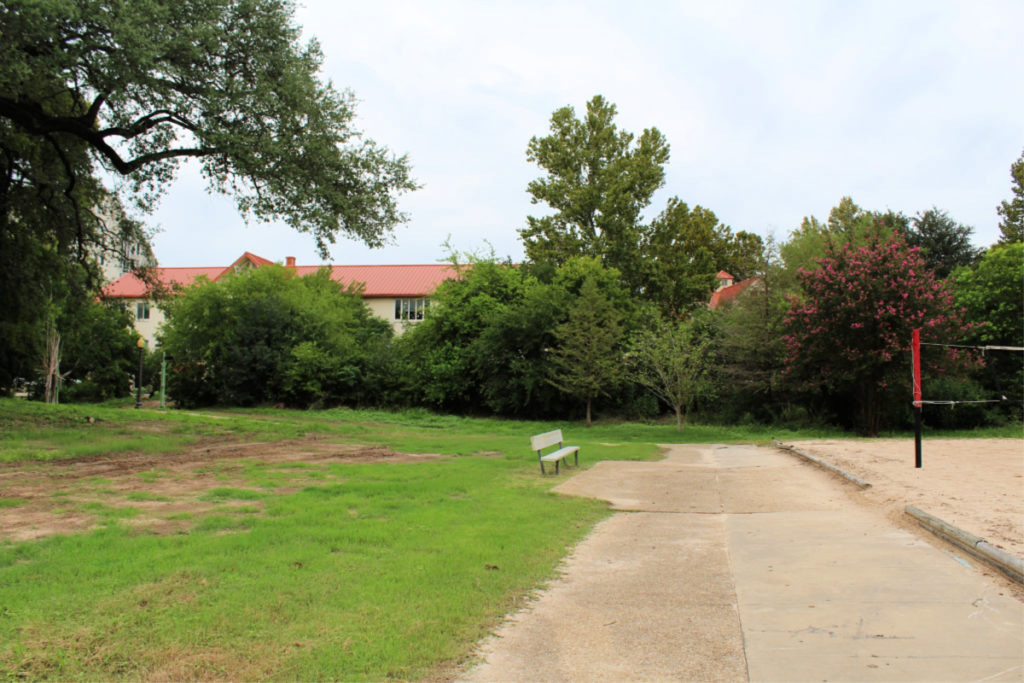
The Blue Hole, as you can see on the campus map, is accessible from a walking trail that winds past a sand volleyball court. A left turn into a wooded area brings you to a low stone wall encircling the spring.
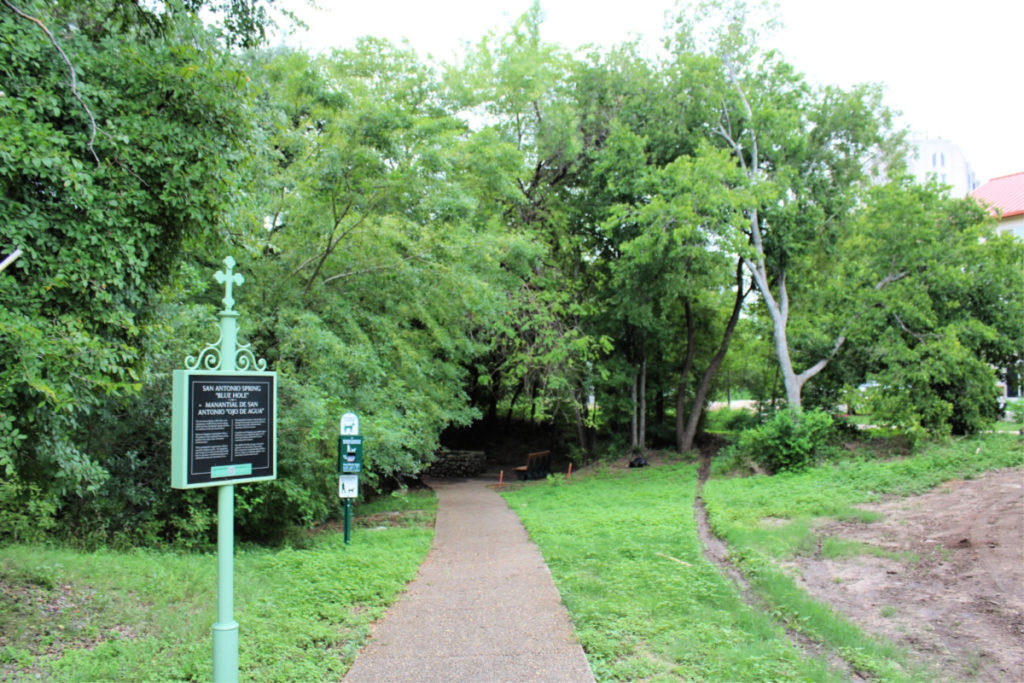
When the aquifer is high enough, the water flows freely from the spring. The surface of the water is disturbed by the constant upward push of water from underground. Small fish dart around in the water, and the riverbed is a patchwork of mud and leaves.
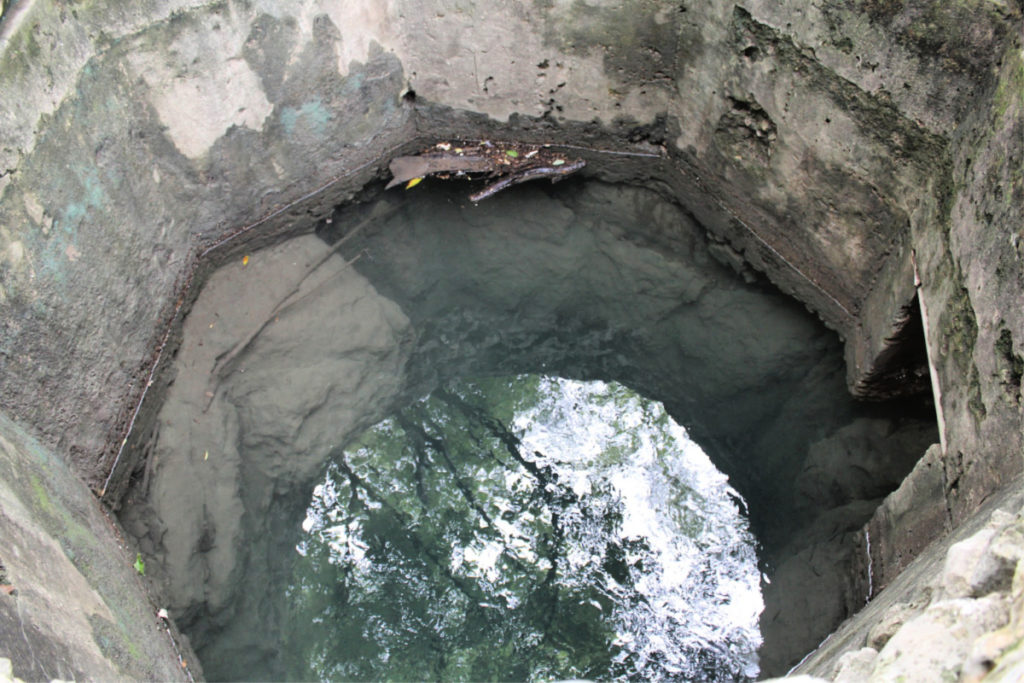
However, when the aquifer is low due to pumping from wells, the Blue Hole is dusty and the riverbed is dry. During those dry times, recycled water keeps the San Antonio River flowing downstream.
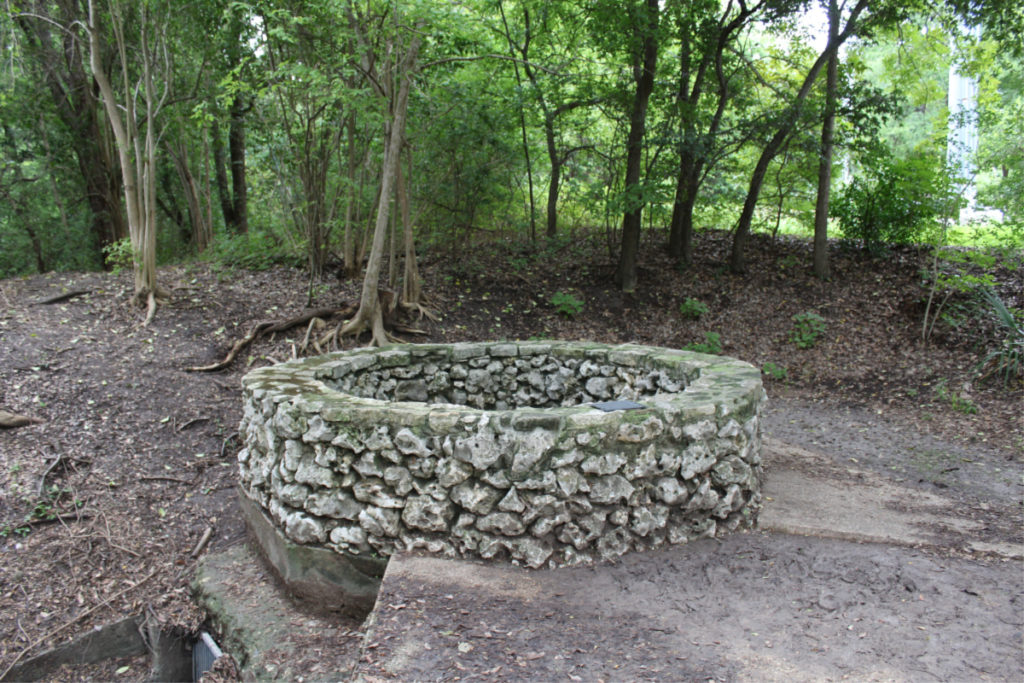
The spring is a small and humble place compared to the river as it goes through the artsy Museum Reach, the touristy San Antonio River Walk, the naturalistic Mission Reach, and beyond. Nevertheless, the Blue Hole has a sacred feeling. There is a bench nearby inscribed with the words, “Be still and know.”
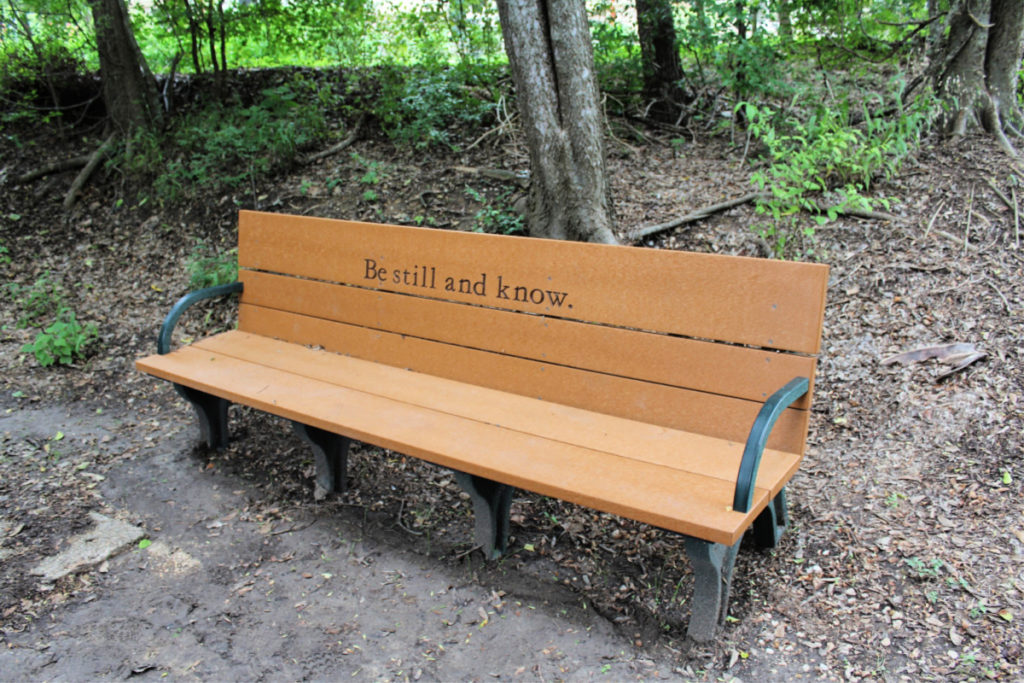
On our recent visit, my kids wanted to skip around and play, but they also took the time to sit on the bench, look out over the river, and enjoy a quiet moment in the shade.
Learn More About San Antonio’s Water
Visiting the Blue Hole with your family is a good way to start a discussion about where San Antonio’s water comes from. The Edwards Aquifer is a remarkable thing, but the water supply is limited in times of drought, so our citizens need to practice conservation and our city needs to plan for the future by securing other supplies of water.
In addition to the Blue Hole, there are other family-friendly places to learn about water.
- No Name Creek in the Family Adventure Garden at the San Antonio Botanical Garden has water features and walls that depict aquifer structures. Also, the Botanical Garden’s amphitheater used to be a reservoir, part of a municipal water project led by George W. Brackenridge.
- In Brackenridge Park, the San Antonio Conservation Society is in the process of restoring Pump House No. 1. Built in 1877, it is the oldest surviving industrial building in San Antonio.
- On the grounds of the Witte Museum, stone blocks mark the path of the Acequia Madre, a dam and canal that diverted water for the Alamo. On the museum’s second floor, the People of the Pecos gallery sheds light on what life was like for the first human settlers of the Headwaters area.
- The Yanaguana Garden playground at Hemisfair has sculptures by Oscar Alvarado that illustrate the Payaya origin story about the San Antonio River. Look for climbable, tile-covered statues of a cormorant, a jaguar, and a spiral representing the Blue Hole.
- Confluence Park, a project of the San Antonio River Foundation, has a large-scale map of the San Antonio river and its tributaries. From the pavilions there is easy access to the trails of the Mission Reach.
- The Science Mill in Johnson City presents the water cycle through The Story of Water, an exhibit in a refurbished silo.
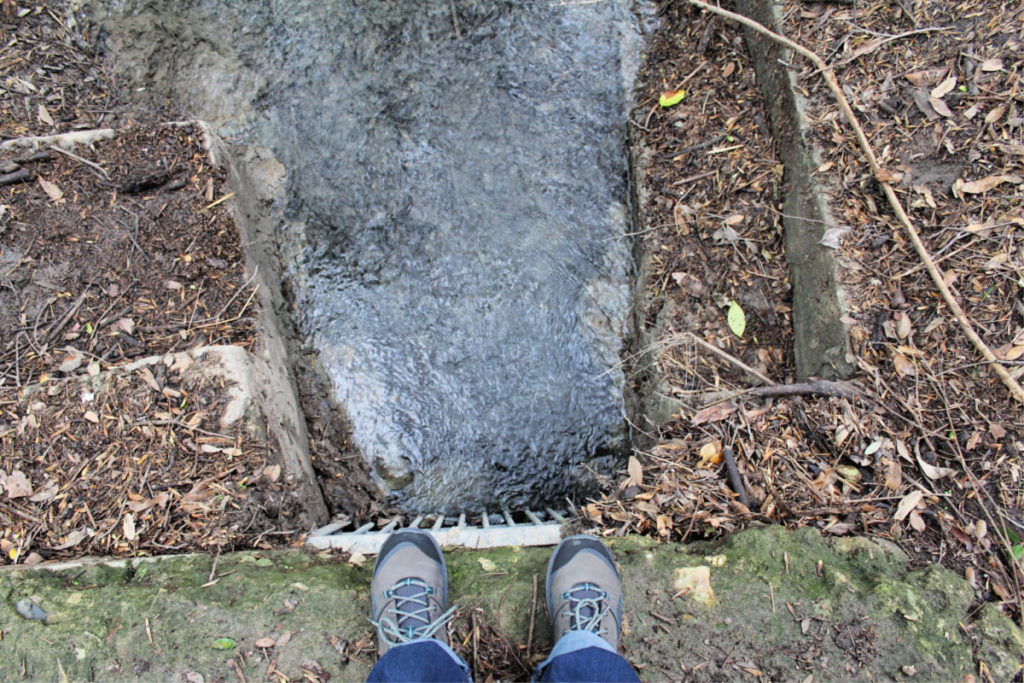
Read more:
- “Record Rains Restore Flow Of San Antonio’s Blue Hole,” Brian Kirkpatrick, Texas Public Radio, September 21, 2018
- “The Blue Hole, Mother Spring of the San Antonio River, Is Flowing Again,” Brendan Gibbons, Rivard Report, September 20, 2018
- “Meet the man behind Yanaguana Garden’s blue panther,” Deborah Martin, San Antonio Express-News, July 31, 2018
- “Do You Know Where Your River Starts? Blue Hole Exhibit Celebrates San Antonio Heritage,” Alex Scott Antram, Rivard Report, March 28, 2018
- “The Blue Hole at the San Antonio River is getting an extreme makeover,” Sue Calberg, KENS 5, September 20, 2017
- “‘Head-of-the-River’ immersed in San Antonio history,” Steve Bennett, San Antonio Express-News, July 8, 2017
- “The Edwards Aquifer: A Valuable Resource We Must Conserve,” Joe Nick Patoski, Rivard Report, October 8, 2016
- “With aquifer levels high, Blue Hole flows again,” Brendan Gibbons, San Antonio Express-News, June 13, 2016
- “San Antonio’s Blue Hole Flows Again . . . For Now,” Warren Lieberman, Rivard Report, July 1, 2015
